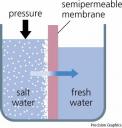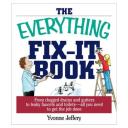This is a great book recommended by the author of “4-hr work week” book. This book is almost like a modern version of the “Think and Grow Rich,” although I feel this book is a bit more practical.
1. Believe you can succeed and you will.
3 guides to acquire and strengthen the power of belief: 1) Think success, don’t think failure. Think “I will win.” 2) Remind yourself regularly that you are better than you think you are. Never sell yourself short. 3) Believe Big.
2. Cure yourself of excusitis, the failure disease. 4 common forms of excusitis: 1) “But my health isn’t good.” 2) “But you’ve got to have brains to succeed.” 3) “I’m too old.” 4) “I attract bad luck.”
3. Build confidence and destroy fear. Practice the following: 1) Action cures fear: Isolate your fear and then take construction action. 2) Put only positive thoughts in our memory bank. Simply refuse to recall unpleasant events or situations. 3) Put people in proper perspective. People are more alike than they are different. Get a balanced view of other fellow. 4) Practice doing what your conscience tells you is right. 5) Make everything about you say, “I am confident.” Like a) Be a “front seater.” b) Make eye contact. c) Walk 25% faster. d) Speak up. e) Smile big.
4. How to think big. 1) Don’t sell yourself short. Concentrate on your asset. You’re better than you think you are. 2) Use the big thinker’s vocabulary. Use big, bright, cheerful words. Use words that promise victory, hope, happiness, pleasure. 3) Stretch your vision. See what can be, not just what is. Practice adding value to things, to people and to yourself. 4) Get the big view of your job. The next promotion depends on mostly how you think toward your present job. 5) Think above trivial things. Focus your attention on big objectives.
5. How to think and dream creatively. 1) Believe it can be done. When you believe something can be done, your mind will find the ways to do it. Believing a solution paves the way to solution. Eliminate “impossible,” won’t work,” “can’t do,” “no use trying” from your thinking and vocabularies. 2) Don’t let tradition paralyze your mind. Be receptive to new ideas. Be experimental. Try new approaches. Be progressive in everything you do. 3) Ask yourself daily, “How can I do better?” There is no limit to self-improvement. 4) Ask yourself, “How can I do more?” Capacity is a state of mind. 5) Practice asking and listening. Big people monopolize the listening; small people monopolize the talking. 6) Stretch your mind. Get stimulated. Associate with people who can help you to think of new ideas, new ways of doing things. Mix with people of different occupational and social interests.
6. You are what you think you are. 1) Look important; it helps you think important. 2) Think your work is important. 3) Give yourself a pep talk several times daily. Build a “sell-yourself-to-yourself” commercial. Remind yourself at every opportunity that you’re a first-class person. 4) In all of life’s situations, ask yourself, “Is this the way an important person thinks?” Then obey the answer.
7. Manage your environment: Go first class. 1) Be environment-conscious. 2) Make your environment work for you, not against you. Don’t let suppressive forces – the negative, you-can’t-do-it-people – make you think defeat. 3) Don’t let small-thinking people hold you back. Jealous people want to see you stumble. Don’t give them that satisfaction. 4) Get your advice from successful people. Your future is important. Never risk it with free-lance advisors who are living failures. 5) Get plenty of psychological sunshine. Circulate in new groups. Discover new and stimulating things to do. 6) Throw thought-poison out of your environment. Avoid gossip. Talk about people but stay on the positive side. 7) Go first class on everything you do. You can’t afford to go any other way.
8. Make your attitudes your allies. 1) Grow the “I’m activated” attitude. Results come in proportion to enthusiasm invested. Three things to do to activate yourself are: a) Dig into deeper. When you find yourself disinterested in something, dig in and learn more about it. This sets off enthusiasm. b) Life up everything about you: your smile, your handshake, your talk, even your walk. Active alive. c) Broadcast good new. No one ever accomplished anything positive telling bad news. 2) Grow the “You are important” attitude. People do more for you when you make them feel important. a) Show appreciation at every opportunity. Make people feel important. b) Call people by name. 3) Grow the “service first” attitude, and watch money take care of itself. Make it a rule in everything you do, give people more than they expect to get.
9. Think right toward people 1) Make yourself lighter to life. Be likable. Practice being the kind of person people like. This wins their support and put fuel in your success-building program. 2) Take the initiative in building friendships. 3) Accept human differences and limitations. Don’t expect anyone to be perfect. Don’t be a reformer. 4) Tune in Channel P, The good thoughts station. Find qualities to like and admire in a person, not things to dislike. Think positive thoughts towards people – and get positive results. 5) Practice conversation generosity. 6) Practice courtesy all the time. 7) Don’t blame others when you receive a setback. Remember, how you think when you lose determines how long it will be until you win.
10. Get the action habit 1) Be an “activationist.” Be someone who does things. Be a doer, not a ‘don’t-er.’ 2) Don’t wait until conditions are perfect. They never will be. Expect future obstacles and difficulties and solve them as they arise. 3) Ideas alone won’t bring success. Ideas have values only when you act upon them. 4) Use action to cure fear and gain confidence. Do what you fear and fear disappears. 5) Start your mental engine mechanically. Don’t wait for spirit to move you. Take action, dig in, and you move the spirit. 6) Think in terms of now. 7) Get down to business – pronto. 8 ) Seize the initiative. Be a crusader. Pick up the ball and run. GET IN GEAR AND GO!
11. How to turn defeat into victory. 1) STudy setbacks to pave your way to success. 2) Have the courage to be your own constructive critic. Seek out your faults and weaknesses and then correct them. 3) Stop blaming luck. Research each setback. 4) Blend persistence with experimentation. Stay with your goal but don’t beat your head against a stone wall. Try new approaches. Experiment. 5) There is good side i every situation. See the good side and whip discouragement.
12. Use goals to help you grow 1) Get a clear fix on where you want to go. Create an image of yourself 10 years from now. 2) Write out your 10-year plan. Put down on paper what you want to accomplish in your work, your home, and you social departments. 3) Surrender yourself to your desires. Set goals to get more energy. Set goals to get things done. Set goals and discover the real enjoyment of living. 4) Let your major goal be your automatic pilot. 5) Achieve your goal one set at a time. Regard each task you perform as a step toward your goal. 6) Build 30-day goals. Day-by-day effort pays off. 7) Take detours in stride. 8 ) Invest in yourself. Invest in education. Invest in idea starters.
13 How to think like a leader. 1) Trade minds with the people you want to influence. 2) Apply the “Be-human” rule in your dealings with others. 3) Think progress, believe in progress, push for progress. Think improvement in everything you do. Think high standards in everything you do. 4) Take time out to confer with yourself and tap your supreme thinking power. Managed solitude pays off. Use it to release your creative power.
I utterly enjoyed reading this book. The ideas are very well thought out with good examples and the organization of the book is superb. Love the outlines. The teachings make a lot of sense to me. I think I ought to practice these. Perhaps, I have not been thinking big. There is still a lot of potential left in me. Let’s see how it would pan out. THINK BIG!





